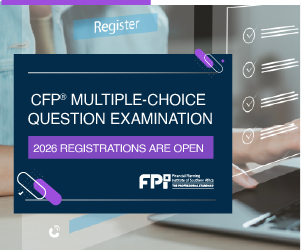Like many financial planning businesses, our process developed organically, shaped by changing regulations, technological advancements and advisor preferences. While it met compliance requirements, it lacked efficiency and scalability. If you’re considering doing the same, be prepared – this is not a quick exercise. With competing priorities, it’s unrealistic to expect to complete it overnight.
In our case, it unfolded over six months, following these structured steps:
1. Establishing a research base
- Literature review. We examined local and international best practices.
- Industry engagement. We consulted with firms, both locally and globally, to understand their processes.
- Internal stakeholder input. We gathered insights from senior advisors, administrators, marketing and operations teams.
- Industry events. We attended presentations on emerging trends and strategies.
2. Mapping and optimisation process
- Mapping our “best house view” process. We defined our ideal, repeatable process to establish a baseline.
- Identifying essential tools. We assessed the technology and resources required.
- Scrutinising each step. We interrogated every stage to optimise for efficiency and client experience.
- Developing supporting materials. We built guidelines, scripts and templates.
3. Implementation and continuous improvement
- Presenting and training. We introduced the new process to the team and provided training.
- Monitoring and refinement. We established an ongoing review mechanism to ensure continuous improvement.
The surprising gaps we found
Mapping the “best house view” process across a medium-sized business (28 advisors across three financial service providers) revealed striking inconsistencies – even within the same firm. Expectedly, younger advisors were more reliant on technology, while senior advisors leaned on traditional methods. However, what was surprising was how effective many senior advisors’ processes were in comparison. Their success came down to discipline – having a structured, repeatable process that had become second nature.
What stood out most was the stark divide between client retention and client acquisition strategies:
- Senior advisors focused primarily on existing clients, driving retention and deepening relationships.
- Younger advisors, still building their client base, were left to figure out client acquisition on their own.
While both are critical to business growth, we realised that client acquisition was the missing link. Without a structured acquisition strategy, growth is slow and newer advisors struggle to gain traction. By mapping our process, we created an opportunity to design a repeatable, scalable approach for attracting new clients – one that ensures the sustainability of both individual advisors and the business.
The real value of advice: it’s not about the product
A major takeaway from this process was that advisors can struggle to clearly articulate the value they provide. If advisors are unsure of their value, selling their process becomes significantly harder.
The industry still grapples with an outdated mindset – equating an advisor’s worth with the products they sell. Yet, studies from institutions like Vanguard and Russell Investments consistently show that the real value of financial planning lies elsewhere, such as in:
- Behavioural coaching. Helping clients to manage emotions and stay disciplined.
- Active rebalancing. Ensuring portfolios remain aligned with long-term objectives.
- Customised family planning. Addressing intergenerational wealth transfer.
- Tax planning. Minimising tax liabilities through strategic planning.
The financial planning industry must shift its focus. Our product is advice. Investment and insurance products are simply tools to implement that advice. We packaged these important value-added services and trained our advisors to communicate them more effectively.
Sales and communication: the underrated skillset
As we refined our process, another issue became clear: too little time is spent training advisors in sales and communication skills. The word “sales” carries a negative connotation in our industry, often associated with aggressive product pushing. Yet, ethical persuasion is a fundamental skill for any financial planner. As Richard Mulholland puts it in Here Be Dragons, “To sell well is a noble craft. We should all sell with pride.” Technical expertise is essential, but it’s not enough. Advisors need to:
- Communicate complex ideas simply and persuasively.
- Build trust through clear and engaging conversations.
- Guide clients toward positive financial decisions.
Newer advisors focus their conversations on themselves or their firm trying to sell themselves rather than demonstrating an understanding of client needs. We prioritised training in active listening and client engagement skills, drawing on techniques from Chris Voss’ Never Split the Difference, such as mirroring, labelling, paraphrasing, summarising and using effective pauses.
By treating these soft skills as equally important as technical knowledge, we strengthened our advisors’ ability to connect with clients and improve engagement.
The power of first impressions
Once we mapped our advice process, we had the opportunity to scrutinise every interaction – especially the initial client call and first meeting. One of the biggest insights? The first conversation determines everything. If advisors mishandle the initial call, they risk being perceived as product pushers rather than trusted professionals. We refined this process by breaking down the first client meeting into micro-steps designed to:
- Build rapport and establish trust from the outset.
- Deliver a clear and compelling message about the value of financial advice.
- Gather the necessary information to support effective planning.
By visually mapping each step, we identified specific tools to professionalise every client interaction. This process allowed us to standardise email templates, meeting guidelines and presentation materials. By ensuring consistency across our brand, we offer a more polished client experience.
The case for mapping your advice process
After much debate, one thing became clear: great processes exist, but few are well-documented. Many firms rely on informal, advisor-specific approaches, leading to inefficiencies and inconsistencies. Going through this exercise gave us the opportunity to identify training gaps, clarify roles within the advice process and review and optimise our organisation’s “toolbox” – including technology, templates and engagement strategies.
The result? A structured, repeatable and scalable approach that ensures best practices aren’t left to chance. Most businesses have an advice process, but few have one that is truly optimised. If there’s one thing you do in 2025, map your advice process!
I always enjoy engaging with industry professionals about their processes –
what’s working, what isn’t and what we can learn from one another. If you’d like to connect to discuss this topic, our insights and what
we’ve learned along the wayfeel free to reach out to Theoniel McDonald, CFP® at theoniel@wealthassociates.co.za














